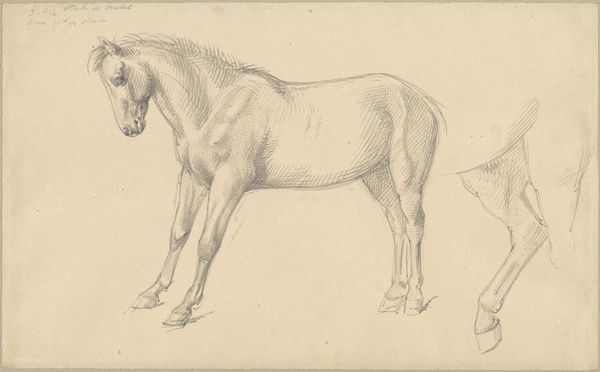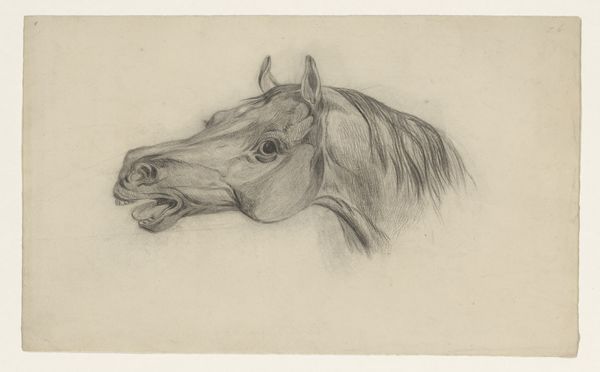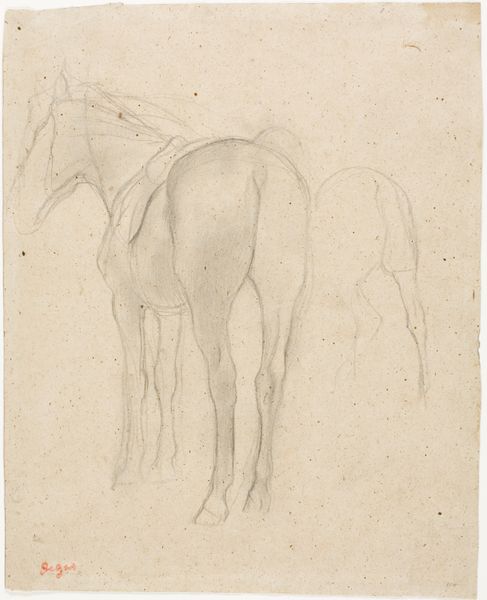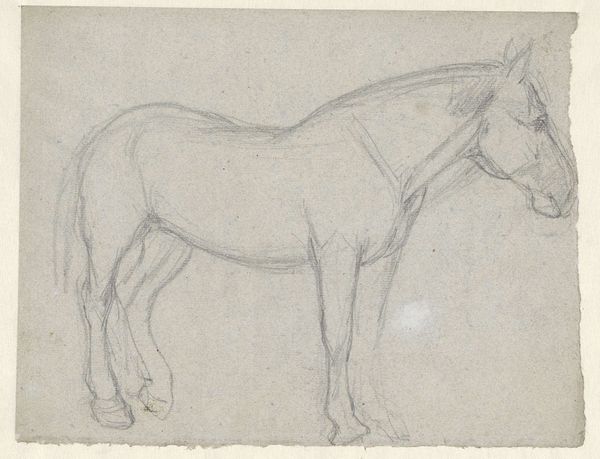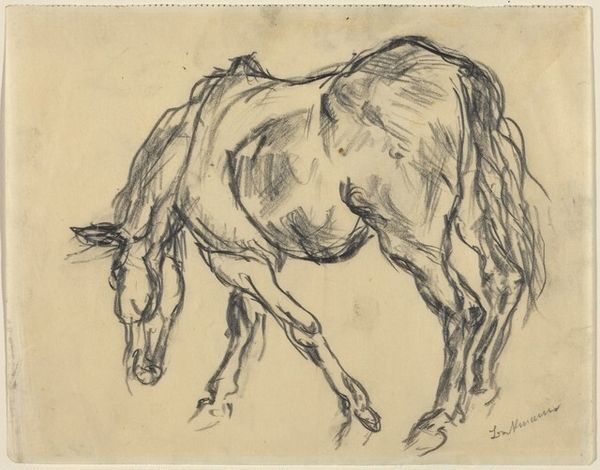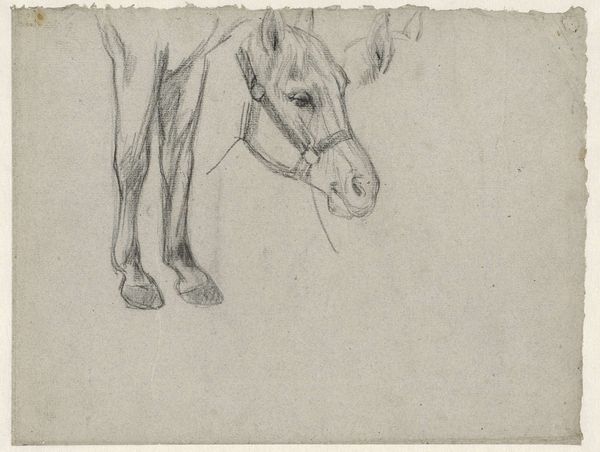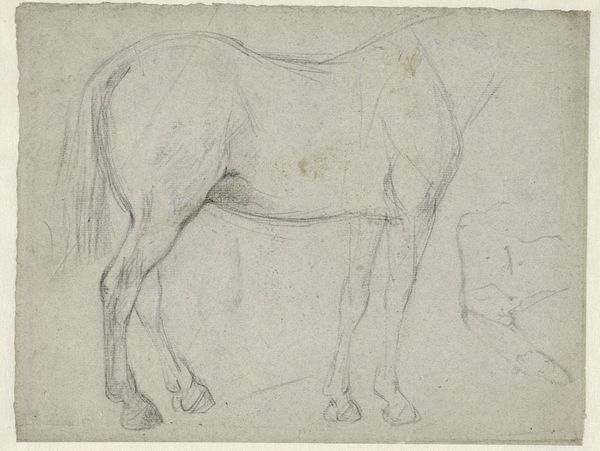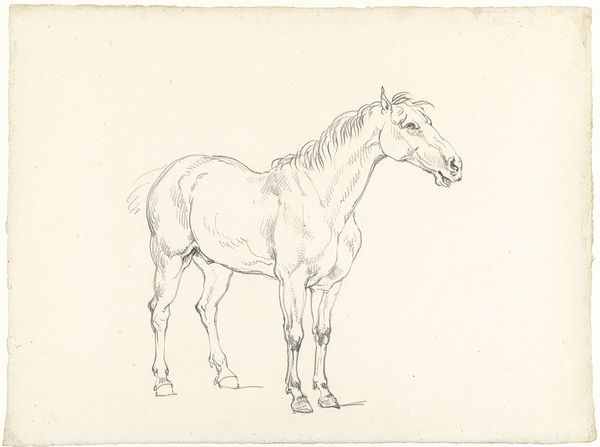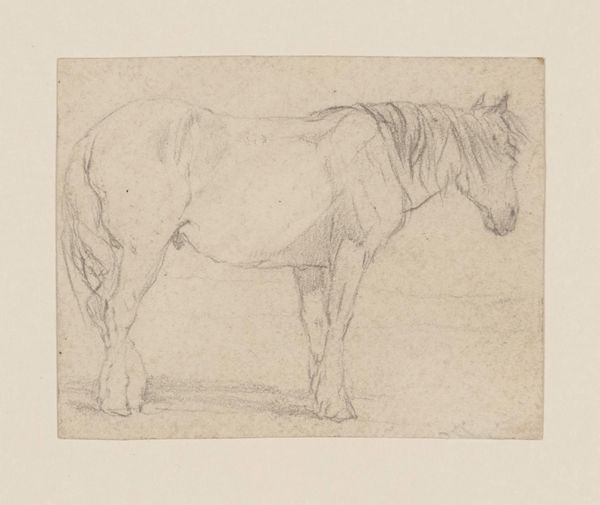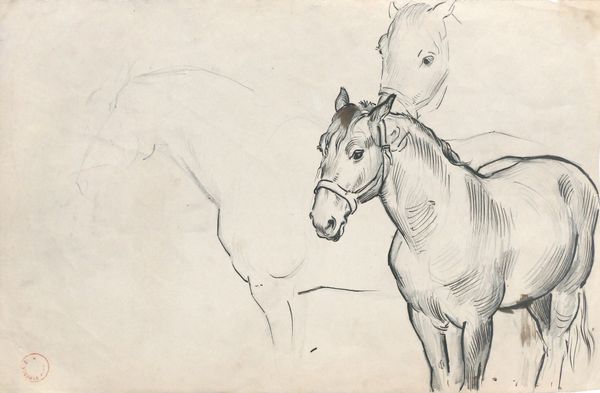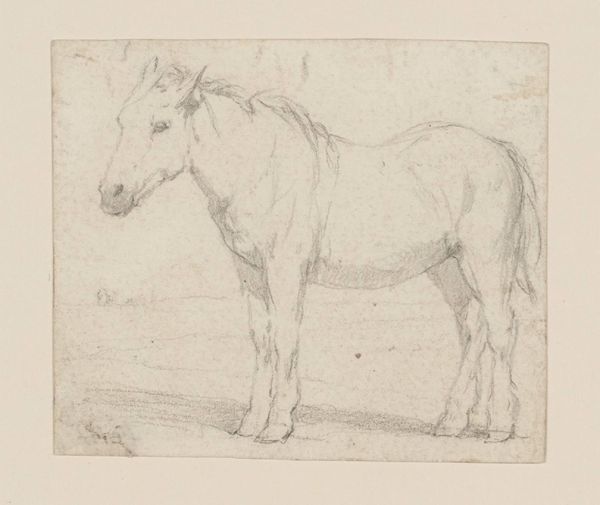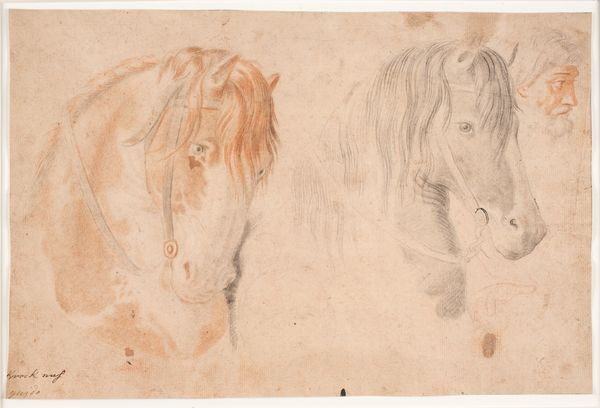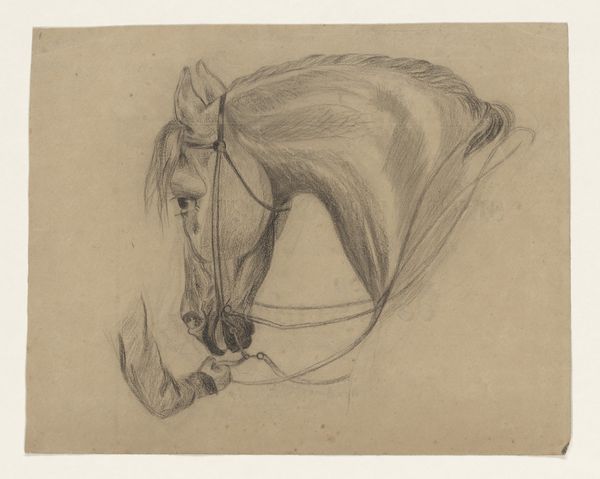
drawing, pencil
#
portrait
#
drawing
#
baroque
#
pen sketch
#
pencil sketch
#
etching
#
figuration
#
pencil
Dimensions: 175 mm (height) x 217 mm (width) (bladmaal)
Curator: Before us, we have "A Horse," a drawing attributed to Francesco Fernandi, dating from 1678 to 1740. It’s currently held at the SMK, the National Gallery of Denmark. Editor: My immediate reaction is to the raw energy in this sketch, the unfinished quality. It captures a specific essence of the horse; that melancholy, drooping head suggests subjugation. Curator: It’s remarkable how Fernandi utilizes the economy of line here. The marks aren't just outlines; they sculpt form, imply volume. The varying pressure and direction of the pencil create a subtle play of light and shadow, defining the animal’s musculature, for example around its neck. Editor: Yes, the hatching is quite suggestive. I’m curious, though, about the aristocratic equestrian culture of the time. Horses weren't merely beasts of burden, but potent symbols of power and privilege. Knowing the timeframe of this work, were these studies related to larger commissions? Curator: Potentially. During the Baroque period, equestrian portraiture was popular among the European nobility. A drawing like this might have served as a preliminary study for a grander painting or sculpture. Note the way Fernandi carefully renders the head and neck. He leaves other sections quite bare. Editor: This begs questions of labor and value. Whose horse is being memorialized? Were those depictions reflective of reality, or purely aspirational fantasies aimed at solidifying hierarchical power? I find that very troubling, even in this quickly realized piece. Curator: We are confronted with layers of aesthetic choices. Fernandi made specific choices regarding composition, and perspective. We are allowed a partial view of the animal. This cropped view focuses our attention to a limited visual area which results in a direct intimate portrayal. Editor: Agreed. Though this work does reveal a complicated story about art and its historical link to political control and class dynamics. Curator: Indeed, examining these power dynamics enriches the viewing experience. Editor: This has certainly provided ample food for thought regarding Baroque society. Curator: Yes, by carefully considering line and composition, while considering the context, new discoveries come to light.
Comments
No comments
Be the first to comment and join the conversation on the ultimate creative platform.
